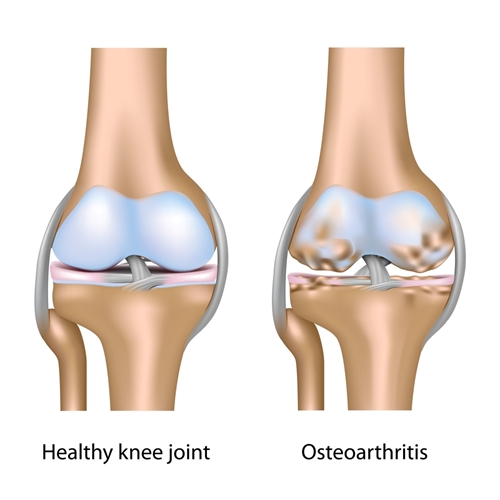Study suggests link between finger length and knee replacement surgery
Every year, millions of Americans require some form of orthopedic surgery to alleviate the symptoms caused by the breakdown of cartilage in joints. Sometimes, these symptoms are minor and can be treated with simple medications. Other times, however, more drastic measures, such as complete joint replacement, are necessary.
Predicting the risk of joint breakdown could help patients take better care of their joints, though, and a recent study published in the journal Rheumatology found a link between the length of the index and ring fingers and the eventual need for knee replacement surgery. While the study could not prove any causal relationship, the findings may help orthopedic practitioners focus on patients where the associated risk is higher.
Fingering the problem
Conducted by several researchers from Australia's Monash University, the study collected data on the length of the ring and index fingers of 14,511 middle-aged participants and followed the occurrences of total knee replacements among that group between 2001 and 2011. The study also collected data on how many participants had total hip replacements, as well.
The Monash University researchers found that a lower index-to-ring finger length ratio was present in a higher number of total knee replacements than average. Of the original participant sample size, 580 eventually had surgery to implant artificial devices into their knees. Only the ratio of the fingers on the right hand seemed to imply a correlation.
The study also found that 500 people had total hip replacements, but that there was no correlation with the length of index and ring fingers.
Identifying a correlation
While the study was careful to categorize its findings as implying correlation and not causation, the index-to-ring finger ratio may be critical for orthopedic physicians on the lookout for patients with higher risks to develop osteoarthritis.
The Arthritis Foundation explains osteoarthritis as a chronic condition where cartilage – a cushioning and lubricating material between joints – breaks down over time. With no interstitial material, bones may contact each other, causing loss of mobility, general stiffness and sometimes severe discomfort.
Unfortunately, there is no cure for osteoarthritis. For patients with a low index-to-ring finger ratio, regular physical activity may help offset the symptoms of the condition, as may avoiding carrying around excess weight, which may put undue strain on joints. A regular fitness regimen will also build stronger muscles that can support some of the weight normally held by joints.



